If you list the symptoms of cervical osteochondrosis - almost any adult means that he felt them.This disease really has a significant spread: in developed countries, osteochondrosis occurs in 60-80% of the population.To distinguish whether a person really has cervical osteochondrosis or is manifestations of another state, it is necessary to master information about this pathology.The article describes the causes of the disease, its features and manifestations, methods of diagnosis and treatment.By possessing information about pathology, patients will be able to recognize it at home and seek help in a timely manner.
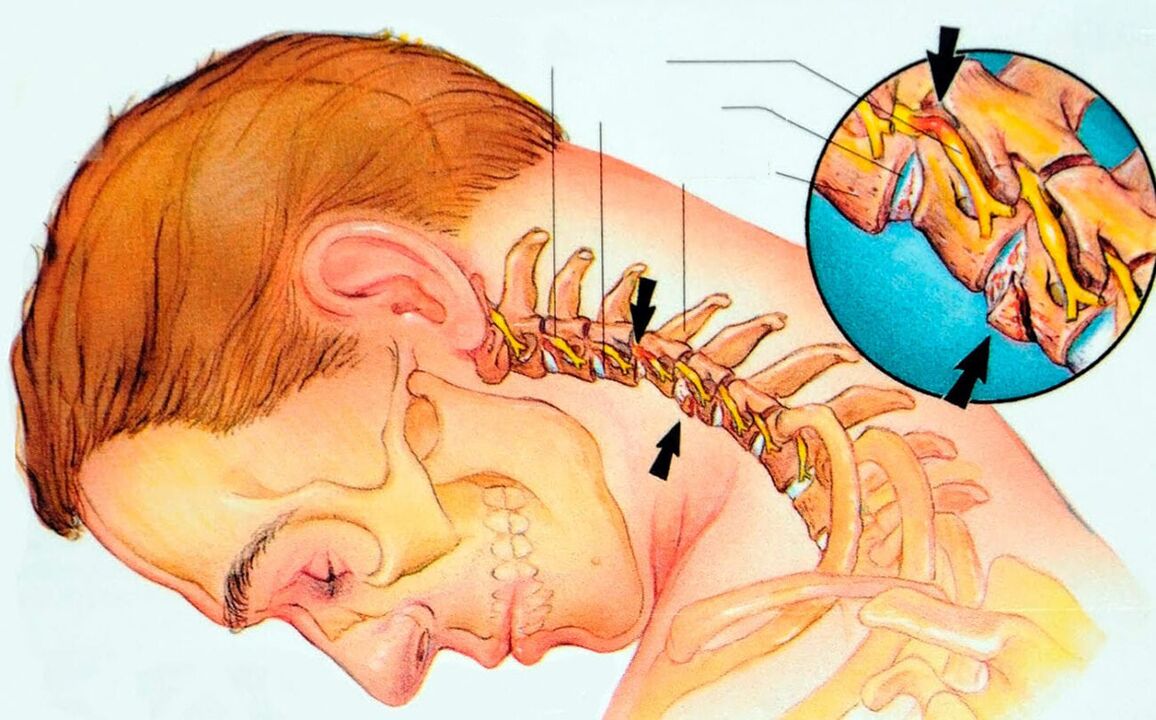
What is cervical osteochondrosis?
The disease is natural degenerative and damages the structure of the spine with the primary and secondary mechanism.The pathogenetic mechanism of the pathology is that the structure of the vertebral bond is damaged.
Normally, between these areas there is a layer - pulpous fabric.It depreciates the spine and optimizes the engine process.With cervical osteochondrosis, this mild substance is calcified and transformed into a strong tissue.This damages nerve endings and blood vessels, violating their function.
Depending on the level of damage, osteochondrosis can be manifested by pain or high pressure, damaged consciousness or numbness of the tongue.May be symptoms from the chest or back.This greatly complicates the diagnostic process.Patients may pass some diagnostic consultations before going to a profile specialist.The diagnosis process uses several methods that allow the exclusion of pathology from other organs and systems.
Gradually, cervical osteochondrosis "becoming younger" and is increasingly found in young patients.Modern young people begin to experience neck problems much earlier than their parents.
Osteochondrosis is the degeneration of the cervical region, which is customary to consider by two positions:
- Physiological changes.Indeed, cartilage degeneration is a natural part of development, which is regulated by neuro -endocrine mechanisms and is irreversible.The process begins with the center of the pulpic layer and gradually passes to the periphery.The soft tissue is replaced by fibrous fibrous elements.Such a process practically does not disturb the patient and manifests itself only when it affects nerve endings.
- Pathological changes.Destruction of vertebrae as a result of the effect of a group of factors.This process is before physiological changes and leads to a violation of the spine function.Symptoms accompany this condition almost always because they spread outside the cartilage structure and damage nerve endings, blood vessels.
The course of the disease can be of a different nature: sometimes pathology is compensated independently or vice versa - there are periods of irritation.At the same time with the pathological process, the compensation mechanisms are included, which temporarily prolong the function of the vertebrae and eliminate the symptoms.
However, the further course of the disease leads to the destruction of the fibrous ring, the appearance of micrococks.The vertebrates lose their stability and fixation, which is manifested by a clinical view of the disease.
Moreover, cervical osteochondrosis is the impregnation of the pulp of the intervertebral space with calcium.This forms a kind of hernia because the damaged vertebra is pressed into the body of a neighbor.These structures are tired and as a result there is a massive oscilification of neighboring structures.
The course of cervical osteochondrosis has several stages:
- Phase 1 is the instability of vertebral structures and disk violation;
- 2 Stages - reduced fastening of the spine and disk extension;
- Stage 3 - rupture of a fibrous ring, severe symptoms and pain;
- Phase 4 is associated with difficulty moving, acute pain and widespread bone spread.
Characteristics of anatomical arrangement of muscle and blood vessels - make the neck a tangible area of the body.A long course of osteochondrosis leads to numerous complications, including vascular nature.Many can cause significant damage to the patient's health and pose a pronounced risk.
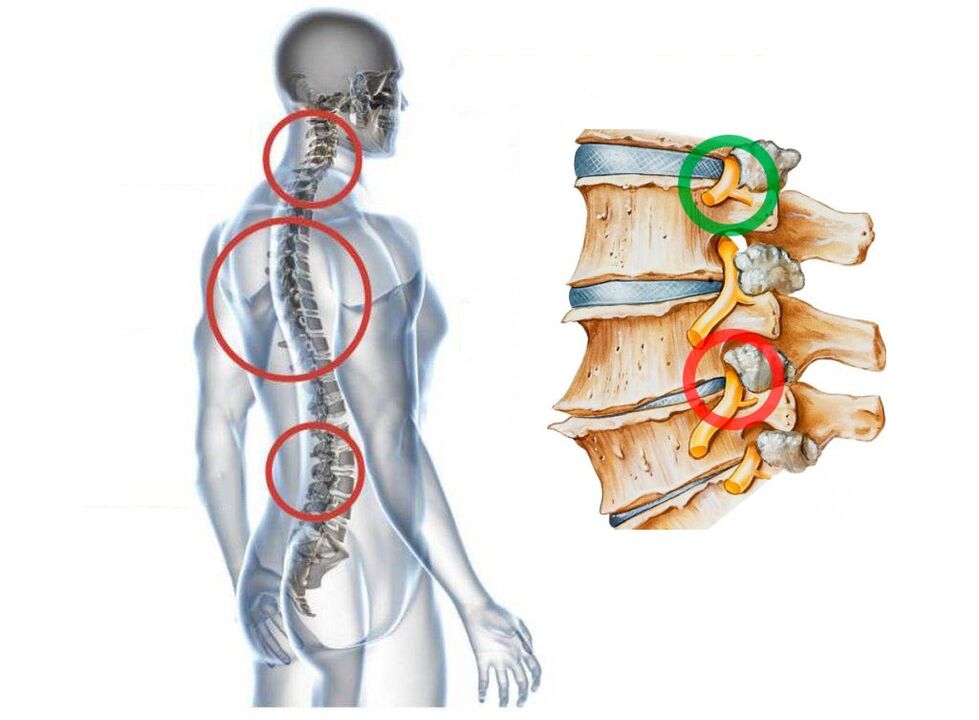
Symptoms
The risk of cervical osteochondrosis is that it is not manifested by the symptom for a long time.This is facilitated by masking the signs of the disease for another pathology, as well as an independent administration of analgesic drugs.This makes the diagnosis of cervical osteochondrosis long and difficult.It is important not to delay the diagnosis until the structure of the vertebrae is replaced with bone tissue.
Consider the main groups of symptoms found in the osteochondrosis of the cervical region and their features.
Dizziness
As mentioned above, most of the symptoms of osteochondrosis may be characteristic of other conditions.Thus, dizziness is accompanied by vascular pathologies of the central nervous system, hearing aid damage, malfunctions of vestibular apparatus and cardiovascular disease.Dizziness is associated with intoxication, inflammatory processes.It is important to consider a holistic clinical appearance, not individual symptoms.Also, you need to learn to distinguish between the main types of dizziness for the reasons for its occurrence.
With the cervical back osteochondrosis, a systematic dizziness occurs.It seems to the patient that the surrounding objects begin to be in motion.Such a disorder can be observed after a head and neck injury, as well as against the backdrop of the diseases of the vestibular apparatus.
Headache
Again, it is extremely difficult to call this symptom specific.Headache can accompany excessive work, increased pressure, and serious acute conditions.With osteochondrosis, headaches occur as a result of compression of nerve endings.This leads to the spasmodic of the arteries that bleed the brain, as well as to increase pressure on the central nervous system.The result is a pronounced feeling of headache.
The characteristics of headache in this case are a dull character and a feeling of pulsation.Sometimes the pain can appear with attacks, and sometimes it has a constant character.Pain parameters for osteochondrosis resemble the features of this with hypertension, angina pectoris.Differences in headaches in cardiological pathology are that it is associated with chest pain, heart rate, ECG changes.Therefore, only a doctor can finally determine the cause of the pain.
Different localization pain syndrome
In addition to headache, the patient is often worried about neck pain.This is called the cervix and a complication of osteochondrosis.Painful sensations can radiate to the upper limb.Patients notice that pain in the hands occurs after waking, against the backdrop of sudden movements.Painful sensations go through themselves after a short break.
The characteristic features of pain syndrome with cervical osteochondrosis are listed below:
- Unpleasant sensations localize to deep neck tissue;
- Head curves are often associated with pain and cramping;
- There is muscle weakness, numbness, colds of the hands.
Most often, neck osteochondrosis affects two lower beads - 6 and 7. For itself - small diagnosticism, this method is recommended.It is necessary to pay attention to the combination of pain in the neck and fingers of the hand.Most often, if the 6th vertebra is affected-the pain will feel on the thumb, and changes in the 7th vertebra are associated with discomfort on the middle finger.
Changes in blood pressure
Such a symptom occurs when nerve endings and blood vessels are affected by changes in vertebrae.How to distinguish this phenomenon from hypertension?First of all, hypertension for cervical osteochondrosis is not constant and has its dances within one day.
Osteochondrosis consists of the following syndromes:
- Vertebral.It is also called vertebra, which indicates that bones and cartilage tissue are included in the pathological process.This leads to the formation of such symptoms: restriction of neck motor activity, pain in its curves, radiological changes in the cervical backpack.It is the simultaneous appearance of these signs which is a vertebral syndrome.
- Vertebral artery syndrome.It appears when vascular beams are involved in the process, which are responsible for the blood supply of the central nervous system tissue.Symptoms suggest that brain tissue has ceased to get a proper amount of nutrients.How to know this syndrome?The first signs are dizziness, a feeling of noise in the ear, changes in blood pressure, the appearance of a "veil" in front of the eyes.This suggests that one of the vertebrates is in a suffocated state.Eachdo ship has its own nerve endings.If you squeeze those that intrigue vertebral arteries - migraine, numbness, short -term vision reduction on one side will appear.As a result, changes in ships lead to the fact that the brain needs oxygen.At this time, a person feels drowsiness, short -term violations of consciousness, loses attention and control, works worse and remembers information.With such a clinical appearance, it is necessary to distinguish cervical osteochondrosis with the atherosclerosis of the vertebral arteries, and the squeezing of the tumor or inflammation.
- Cardiac syndrome.It manifests by burning in the chest area, the appearance of shortness of breath.A person feels his frequent heartbeat, becomes tired and frustrated.This appearance is also characteristic of cardiological pathology, for example, for angina pectoris, coronary syndrome, heart attack.Accurate conclusion about the causes of such symptoms can be done after the patient passes ECG.
- Novice syndrome.The cervical department inovrates 8 pairs of nerves, each of which has the root - the site of nerve exit from the beads.When they are involved in osteochondrosis, the patient feels a decrease in sensitivity or vice versa - severe pain.There may be numbness if her pain, a decrease in tongue sensitivity, freezing area, pain in the supraclycing region may be observed.Sometimes there are swallowing disorders, movement in the upper limb strap, numbness of the fingers.
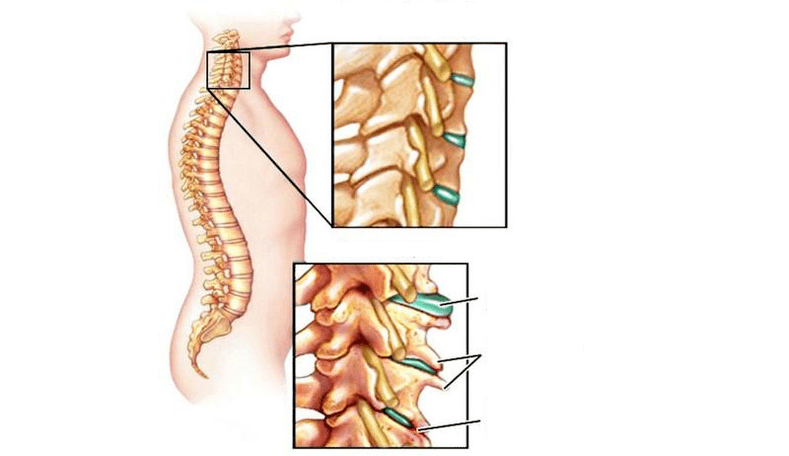
Causes of cervical osteochondrosis
The main reason for the development of osteochondrosis is the improper distribution of load in the spinal column.The reasons can be different - a person can wear a bag or weight on one side, gets an incorrect position when sitting or sleeping on an uneven surface.It increases the load and a high pillow and shoes that do not correspond to the anatomical features of the foot.Such reasons may seem insignificant, but they operate for a long time and, as a result, lead to a logical consequence in the form of osteochondrosis.
Among the risk factors that increase the possibility of the occurrence of the disease:
- Low level of physical activity;
- Increased body weight;
- transmitted spinal damage;
- violation of behavior or pathology of the foot;
- Reduce blood supply to the cervical back.
All this leads to the fact that the wrong position of the vertebrae is formed.The weight does not distribute in all sections of the cervical region evenly and some of its departments hold heavy loads.The answer is a change in tissue.
On one scale or another, the situation may worsen:
- Suffered serious illness or damage that led to a exhausted state of health;
- Frequent stresses;
- Violation of metabolism in the body, reducing the consumption of trace elements, increasing their consumption or lack of absorption in the gut;
- Occupational diseases (in particular, vibrating disease);
- Hereditary tendency for osteochondrosis;
- Scoliosis and other disorders of the skeletal muscle system;
- Violation of the drinking regime;
- Low quality food and bad habits;
- Pregnancy.
As you can see, there is not just a cause of osteochondrosis.There is only a number of factors that can provoke it.Again, the same reason affects different people in different ways.The state of health, duration, intensity and number of risk factors, background pathologies and lifestyle plays a role.
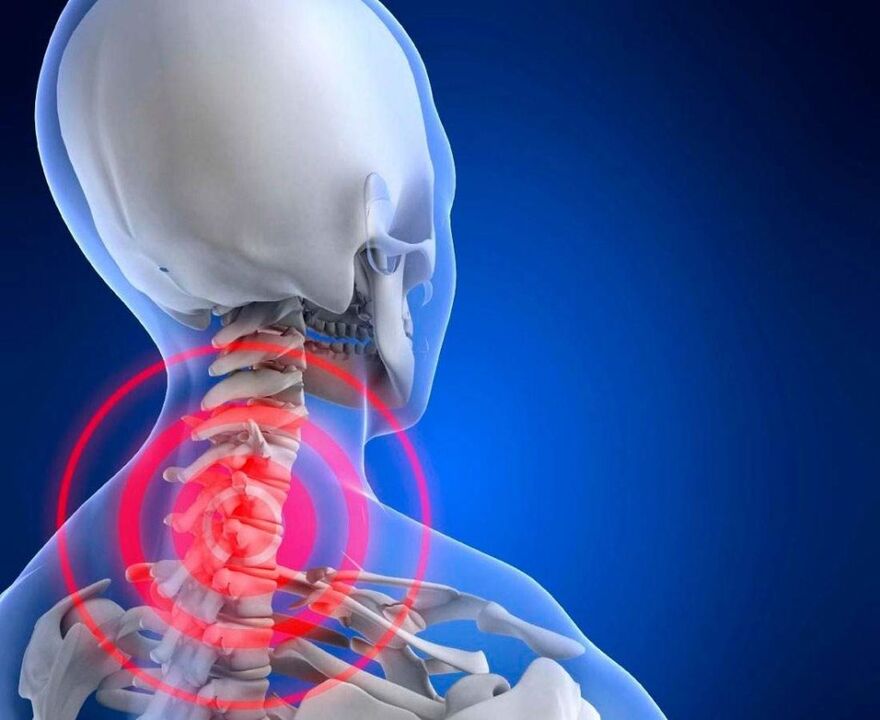
Modern treatment methods
Even before the therapy recipe, the patient must modify the lifestyle.For this, it is necessary to change the level of loads experienced by the cervical department.It is necessary to monitor the quality of the nutrition, to share the time needed for sleep and rest, to keep care of stress.If the body has a background pathology that exacerbates the flow of osteochondrosis, it is necessary to undergo a treatment course and eliminate it.The choice of treatment method depends on the phase of osteochondrosis and the well -being of the patient.
Treatment can be:
- not -drug;
- medicines;
- Surgical
Review popular methods and rehabilitation measures.
Non -Drug treatment methods consist of the use of therapeutic exercises, special simulators or equipment, manual therapy, and physiotherapeutic methods.The right purpose is facilitated by improving the blood supply to the beads or slowing the ossification process.
As for manual therapy or massage, be sure to consult a physician about their adaptability.Do not independently assign these methods to yourself.In some stages of osteochondrosis, massage can only damage and lead to long immobilization.If manual therapy is performed according to indications, it is able to relieve symptoms and improve the patient's well -being.
From physiotherapeutic techniques, with cervical osteochondrosis, they are used below:
- magnetotherapy;
- Therapeutic baths;
- Therapeutic shower;
- mud;
- Electrophoresis.
The use of medicines is indicated in case of deterioration of the situation.Many eliminate inflammation and sharp pain, improve blood supply to the tissue, restore cartilage structures and ensure joint movement.This is a comprehensive approach to causes and symptoms, and not a one -sided solution to the problem.Once taken correctly selected medicines, the patient again gets the opportunity to move the neck, ceases to prove irritation, deteriorated the mood, returns to normal work and sleep.
Consider groups of drugs used for cervical osteochondrosis:
Nonsteroidal anti -inflammatory drugs
They are used to reduce inflammatory phenomena in the tissue, eliminate pain, facilitate squeezing of roots and blood vessels.With minor symptoms, ointments and gel are used, the most intense pain syndrome is stopped by tablet forms.Injection administration is prescribed with severe pain intensity and its sharp appearance.
They may have other trade names, but the active substance remains unchanged.The patient should take medication with the course, only after the approval of the attending physician.Please note that these funds must be obtained after eating, as they can irritate the gastrointestinal tract mucosa.
Vasodilators
Their function is to enlarge the vessels that are narrowed on the background of the osteochondrosis flow.Drugs - Pentoxifillin, Actovegin, Berlithion.These medicines will relieve vertebral artery syndrome, improve blood flow to the beads and patient well -being.It is necessary to monitor the lack of contraindications to these substances in the patient, as well as their compliance with other medicines a person receives.
Muscle relaxants
The purpose of this group is a decrease in neck muscle spasm.This accelerates and optimizes the treatment process, as muscle tension acts on the vessel and nerve endings.Regular intake normalizes the tone of the blood vessels, reduces the feeling of pain.
Chondroprotectors
Take in order to improve the condition of the spine cartilage elements and protect their structure from destruction.A long reception of these substances is necessary, otherwise they will not have the right action.Patients may not like the effect to occur only after 6 months of use.However, if this effect is achieved, it will be persistent and significantly improve the clinical appearance.
Explosive
They are used as an auxiliary substance to eliminate depressive manifestations and stress.In mild cases, Valerian, Motherwort, Mint and Lemon Balm are used.If depression progresses, more serious substances are needed.They will improve sleep and mood, help the patient to be awarded in effective treatment.
Vitamin
The reception of group B vitamins. They can be recommended by food - this way of presenting vitamins is more physiological and does not maintain a special load on the liver.If vitamin deficiency is observed, vitamin complexes and medicines can be used.This will improve sensitivity and intrigue, speed up the tissue restoration process.
Since the treatment process is prolonged and brings the effect gradually, all stages of medication are important.Make sure the medicines are stored in the right place, as shown in the package.If in the box it is written that you need to store medicines in a dark or cool place - do it, otherwise the medicine will lose its properties.Observe the duration of the course and the frequency of application - some substances tend to accumulate in the body, and only then have the right effect.
If the entry path is injectable, the procedure should be performed by medical staff or a trained person, because the correct presentation increases efficiency.The table forms should be taken after meal, washed with water.Pay attention to this moment, as other liquids are not suitable for this.The combination of grapefruit juice and medication is particularly dangerous - the enzymes contained in this fruit slow down the function of the liver and reduce the distribution of medicines in the tissue.
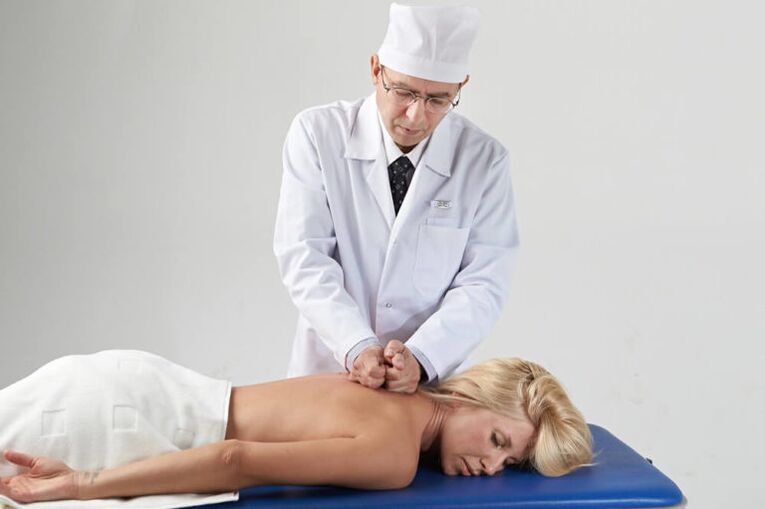
Surgical treatment of cervical osteochondrosis
This method is used when cervical osteochondrosis led to the narrowing of the lumen of the spinal column.This can happen as a result of a hernia or disk extension.The narrative of the canal is associated with a significant vessel stenosis and compression of the nerve beams.If an isolated hernia of the intervertebral discs is observed, this is also an indicator for surgical intervention.Operation is needed for spondylolistz - a shift of vertebrae from the shaft.In addition to these indications, the doctor pays attention to the quality of life of the patient, his condition, the severity of the symptoms.
Types of surgical interventions:
- Supported spondylodes.The essence is to eliminate the damaged disk and replace it with a movable connection, a prosthesis that performs the function of a remote structure;
- Dynamic spine stabilization.A silicone implant is presented between the rotation processes along the spine, which correctly distributes the load and stabilizes the beads;
- Evaporation of the disk core with a laser beam.This is a modern technique that shows good results.Laser affects the core of the disk, reducing its size and eliminating hernia.The intervention is attravatic, it can be performed under local anesthesia.However, a set of indications for such manipulation is limited, it can only be done at that stage.When a hernia size is not more than 6 mm.This once again focuses on the reason why early a doctor requires and a timely diagnosis is useful.
Surgical interventions are kept in a hospital.Depending on the degree of treatment complexity, the duration of the post -operative period and rehabilitation varies.Performing surgical intervention implies an additional complex of medicines - patient preparation medicines, analgesics, antibacterial therapy for the prevention of septic complications.
Troubleshooting
The onset of the diagnosis is the onset of the patient's address to the doctor and the listing of symptoms.The doctor listens to the patient's complaints, details, forms them from the symptoms of the syndromes.Also, the specialist needs details about clinical manifestations: the time of occurrence, whether treatment methods are used and what impact, the nature of the pain, periods of increased pressure and more are used.Important information is information about an unpleasant position during sleep, work, bad habits, background diseases.All this is clear during the conversation.
X -Ray is performed in direct and lateral forecasts.A functional radiological study is performed simultaneously as the neck rotation.The contrast of the spinal canal is used to better visualize the affected areas.The contrast can be inserted into the ship or the disc, depending on which the method is called angiography or discography.In the picture you can see tissue seals, calcification deposits, displacement of spine structures.
In terms of magnetic resonance tomography, this is the most informative method, which is also painless and fast.The doctor can see damage and decide the severity of the process.Tomography scans will help the surgeon prepare for surgery, determine hernia, changes in nerve endings and blood vessels.
MRI is performed in the absence of contraindications that are metallic objects in the body, claustrophobia.Pregnancy.
The calculated tomography also gives an accurate diagnostic view.The study does not take much time - about 10 minutes and does not require special preparation.The radiation load in this study is small, which makes tomography safe for health.Contraindications - pregnancy and lactation, age of children.
In addition to methods that allow you to visualize the pathological process, it is necessary to use additional diagnostic manipulations.
These include an ultrasound study of the head and neck vessels.Indications for diagnosis are dizziness, headache, pressure points.The specialist will determine the blood vessel license and the blood flow state.The most informative method, in this case, is a duplex scan of blood vessels.
PREVENTION
As you can see, cervical osteochondrosis has a diverse clinic, many syndromes and requires a serious approach to both diagnosis and treatment.If you pay attention to your sensations, listen to the body and respond to its signals, an early diagnosis is possible.In the early stages of the disease - treatment has a high effect.
To do this, contact a profile specialist and go through the necessary research methods.High quality and timely treatment will avoid complications, improve well -being and quality of life, eliminate depression and normalize sleep.You allocate in a positive way and you can still feel freedom of movement.





































